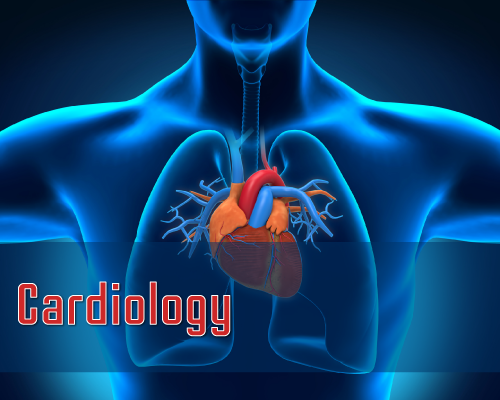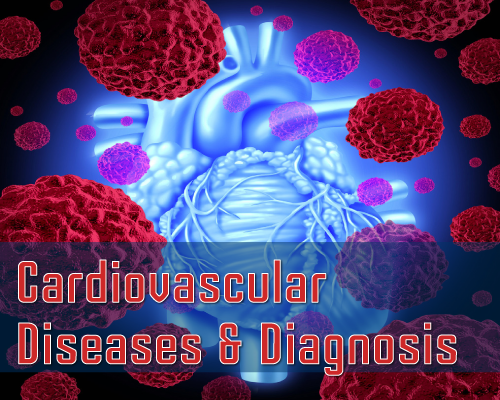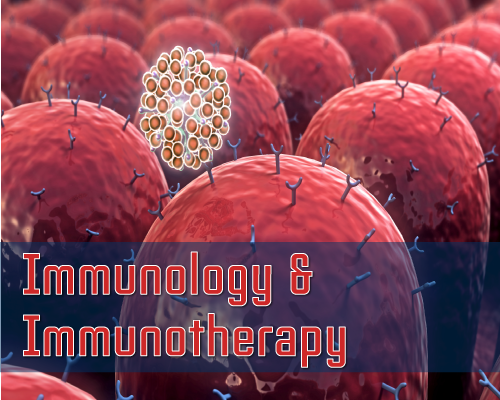Opinion
An Amazing Nutritional Value in Wonderful Finger Millet Makes This “The Most Lovable Food Crop” to the World
Subramani Pandian1, Chandran Sivasankar2, Pandiyan Muthuramalingam1 and Manikandan Ramesh1*
1Department of Biotechnology, Science campus, Alagappa University, Karaikudi, Tamil Nadu, India
2Department of Food science and Technology, Pondicherry University, Puducherry, India
*Address for Correspondence: Manikandan Ramesh, Associate Professor, Department of Biotechnology, Alagappa university, Karaikudi, India – 630 003, E-mail: mrbiotech.alu@gmail.com /pandiannsp7@gmail.com
Dates: Submitted: 12 October 2017; Approved: 20 October 2017; Published: 24 October 2017
Citation this article: Pandian S, Sivasankar C, Muthuramalingam P, Ramesh M. An Amazing Nutritional Value in Wonderful Finger Millet Makes This “The Most Lovable Food Crop” to the World. Sci J Food Sc Nutr. 2017; 3(2): 034-036.
Copyright: © 2017 Pandian S, et al. This is an open access article distributed under the Creative Commons Attribution License, which permits unrestricted use, distribution, and reproduction in any medium, provided the original work is properly cited.
Keywords: Anti-Oxidants; Calcium; Diabetes; Finger Millet; Mineral Nutrition; Vitamins
Abstract
In this “Bullet train” life of human beings, people not at all taking care about the health, that modern life leads to deep rooted food insecurity and malnutrition resulting lots of new diseases and health problems, so the millet is the best option to overcome it. Millets are the minor cereal and small seeded grass family crops (Poaceae). These millets have higher nutritional values compared to rice and wheat. More than twenty mineral elements needed for healthy body function of humans and the finger millet supply them unconditionally. Protein (6-8%) and fat (1-2%) content of finger millet is comparable to rice and the mineral and micronutrient contents are higher than rice and wheat. It is a major source of dietary carbohydrates for more than half of the world population and it also contains several important amino acids, including isoleucine, leucine, methionine and phenyl alanine which are deficient in other starchy meals. Finger millet has three times more Ca than milk and 10-fold higher Ca than brown rice, wheat and maize. Flours of this finger millet used for the preparation of roti, bread, noodles, biscuits, porridge and other snacks. It is a staple food alternative for celiac patients because it has gluten-free properties.
Nutritional facts of finger millet
Finger millet is a cereal grass belongs to the family Poaceae and is more commonly known as ragi in India, in Tamil it is termed as kezhvaragu. It is a vital and nutrient rich food for pregnant women, lactating mothers as well as children and more importantly for more than 50 % the low income marginal people [1]. It grown mainly for its grains and having high proteins, vitamins, minerals, fibre content and energy as better than other cereals/millets [2]. The protein content in this millet is very close to that of wheat; both provide about 11% protein by weight. Even it has similar protein content to wheat, ragi proteins have not been reported as allergenic as wheat [3]. A major portion of ragi is carbohydrate, around 80%. The nutritional values per 100 g of finger millet are: Protein 7.3 g Fat 1.3 g Carbohydrate 72 g Minerals 2.7 g Calcium 344 mg Fibre 3.6 g Energy 328 kCal. Finger millet have been found to have calcium as high as 450 mg/100g of grains [4,5] and hence, can be developed and used as preventive drug(s) against osteoporosis. It has also possessed micronutrient including manganese, phosphorus and iron as well as useful amounts of copper and relatively higher chromium, magnesium, molybdenum, zinc and selenium [6,7]. It also has significant levels of polyphenols and their bioavailability was good even after the conventional cooking [8]. In furtherance, its straw is excellent as animal fodder with up to a total of 60% digestible nutrients.
Pharmacological importances
Finger millet is believed to be a good laxative and prevents constipation because of its high fiber content [9]. People with liver diseases, high-blood pressure, heart weaknesses and asthma are advised to consume roasted green finger millet [1]. The millet is should also be consumed by a lactating mother if she is not capable to produce sufficient milk to feed her infant [10,11]. It is very important not to wait until pregnancy that is far better for the population if we can ensure adequate nutrition before then. Finger millet is being a boon for diabetic and obese patients, as the digestion of finger millet takes place at a slow pace and hence, glucose is released slowly into the blood [1]. Also, finger millet contains amino acids known as tryptophan and methionine. These compounds reduce the appetite, and thus, help to control the diet [12]. So, if people, wants at shedding a few kilos, consuming the finger millet can be a great choice. It is specially recommended for kids, as the millet is rich in calcium, and therefore helps in proper growth and development [13]. Being a rich source of iron, finger millet is good for all those suffering from anaemia. The finger millet raises the haemoglobin level and helps in condition of raises [13,14]. It fights with malnutrition and degenerative diseases. It also works well as an anti-ageing agent.
Modern cookery of finger millet
Finger millet is usually powdered and the whole meal is used for the preparation of traditional foods. In addition to traditional foods, it is also processed to prepare popped, malted and fermented products [15]. Ragi flour cooked with a little milk and sugar is a tasty and easily digestible breakfast cereal. Noodles for diabetic patients were successfully developed from finger millet [16]. Millet flour is gluten free and normally added to breads to reduce gluten content, or to produce lower carbohydrate bread and biscuits, thus it was prescribed for patients with celiac disease [17]. Millet also won’t work well alone in yeast breads because its lack of gluten means the bread won’t rise. Ragi balls are eaten in morning with a chilli, onions, sambar or meat curry that helps sustain throughout the day. The mudde which is prepared by cooking the Ragi flour with water to achieve a dough like consistency is then rolled into ‘balls’ of desired size and consumed by most of the farmers in India. The grain is made into a fermented drink (or beer) in Nepal and in many parts of Africa. (https://www.vahrehvah.com/indianfood/ragi-or-finger-millet).
Even though, a very high nutritional and health benefits of finger millet grains were found comparable to major cereals, there is a necessary to modernize this crop into people’s consumption throughout the world. Few modern products of finger millet are now available in the market such as, ragi health drink (baby vita), foodless, multi-grain noodle, ragi mixture and ragi biscuit.
Concluding remarks
Promoting utilization of finger millet grains in urban areas for creating new markets of farmers to improve their income and developing of value added, convenient and tasty food products by conventional as well as with modern techniques will increase its consumption and that will direct this to “the most loveable food” to the world.
Acknowledgment
The author S. Pandian (UGC order no: F.25-1/2014-15 (BSR)/7-326/2011/BSR) thank the University Grants Commission, New Delhi, India for financial support in the form of fellowship. The authors gratefully acknowledge the use of Bioinformatics Infrastructure Facility, Alagappa University funded by Department of Biotechnology, Ministry of Science and Technology, Government of India (Grant No. BT/BI/25/015/2012).
References
- Shobana S, Sreerama YN, Malleshi NG. Composition and enzyme inhibitory properties of finger millet (Eleusine coracana L.) seed coat phenolics: Mode of inhibition of α-glucosidase and pancreatic amylase. Food Chem. 2009; 115:1268-73. https://goo.gl/jiV6ju
- Vadivoo AS, Joseph R, Ganesan NM. Genetic variability and diversity for protein and calcium contents in finger millet (Eleusine coracana (L.) Gaertn) in relation to grain color. Plant Foods Hum Nutr. 1998; 52: 353-364. https://goo.gl/B8EHQe
- Helferich W, Winter CK. Food toxicology. CRC Press. 2000; 24. https://goo.gl/Cp3vYG
- Gupta N, Gupta AK, Singh NK, Kumar A. Differential expression of PBFD of transcription factor in different tissues of three finger millet genotypes differing in seed protein content and color. Plant Mol Biol Rep. 2011; 29: 69-76. https://goo.gl/SfJwNP
- Kumar A, Mirza N, Charan T, Sharma N, Gaur VS. Isolation, characterization and immunolocalization of a seed dominant CaM from finger millet (Eleusine coracana L. Gaertn.) for studying its functional role in differential accumulation of calcium in developing grains. Appl Biochem Biotechnol. 2014; 172: 2955-2973. https://goo.gl/DwMTSB
- Shashi BK, Sunanda S, Shailaja H, Shankar AG, Nagarathna TK. Micronutrient composition, antinutritional factors and bio accessibility of iron in different finger millet (Eleusine coracana) genotypes. Karnataka J Agric Sci. 2007; 20: 583-585. https://goo.gl/TTUowa
- Tripathi B, Platel K. Finger millet (Eleucine coracana) flour as a vehicle for fortification with zinc. J Trace Elem Med Biol. 2010; 24: 46-51. https://goo.gl/A28np4
- Hithamani G, Srinivasan K. Effect of domestic processing on the polyphenol content and bioaccessibility in finger millet (Eleusine coracana) and pearl millet (Pennisetum glaucum). Food Chem. 2014; 164: 55-62. https://goo.gl/tnoGp2
- Lata C. Advances in omics for enhancing abiotic stress tolerance in millets. Proc Indian Natl Sci Acad. 2015; 81:397-417. https://goo.gl/zodShC
- Panter‐Brick C. Mother‐child food allocation and levels of subsistence activity in rural Nepal. Ecol Food Nutri. 1993; 29: 319-333. https://goo.gl/nPDpPR
- National Research Council. Finger millet. lost crops in Africa Grains. USA: Board on Science and Technology for International Development, National Research Council. 1996; 1: 39-58. https://goo.gl/De5vUp
- Gupta SM, Arora S, Mirza N, Pande A, Lata C, Puranik S, Kumar J Kumar A. Finger Millet: a “Certain” Crop for an “Uncertain” future and a solution to food insecurity and hidden hunger under stressful environments. Front Plant Sci. 2017; 8: 643. https://goo.gl/EqWYyt
- Kumar A, Metwal M, Kaur S, Gupta AK, Puranik S, Singh S, et al. Nutraceutical value of finger millet (Eleusine coracana (L.) Gaertn.), and their improvement using omics approaches. Front Plant Sci. 2016; 7: 934. https://goo.gl/DkEEw9
- Devi PB, Vijayabharathi R, Sathyabama S, Malleshi NG, Priyadarisini VB. Health benefits of finger millet (Eleusine coracana L.) polyphenols and dietary fiber: a review. J Food Sci Technol. 2014; 51: 1021-40. https://goo.gl/Kfgue4
- Gull A, Prasad K, Kumar P. Optimization and functionality of millet supplemented pasta. Food Sci Tech. 2015; 35: 626-632. https://goo.gl/YJa8xJ
- Shukla K, Srivastava S. Evaluation of finger millet incorporated noodles for nutritive value and glycemic index. J Food Sci Technol. 2014; 51, 527-534. https://goo.gl/hGbv1B
- Saha S, Gupta A, Singh SRK, Bharti N, Gupta HS. Compositional and varietal influence of finger millet flour on rheological properties of dough and quality of biscuit. LWT-Food Sci Tech. 2011; 44: 616-621. https://goo.gl/gJYV3F
Authors submit all Proposals and manuscripts via Electronic Form!




























